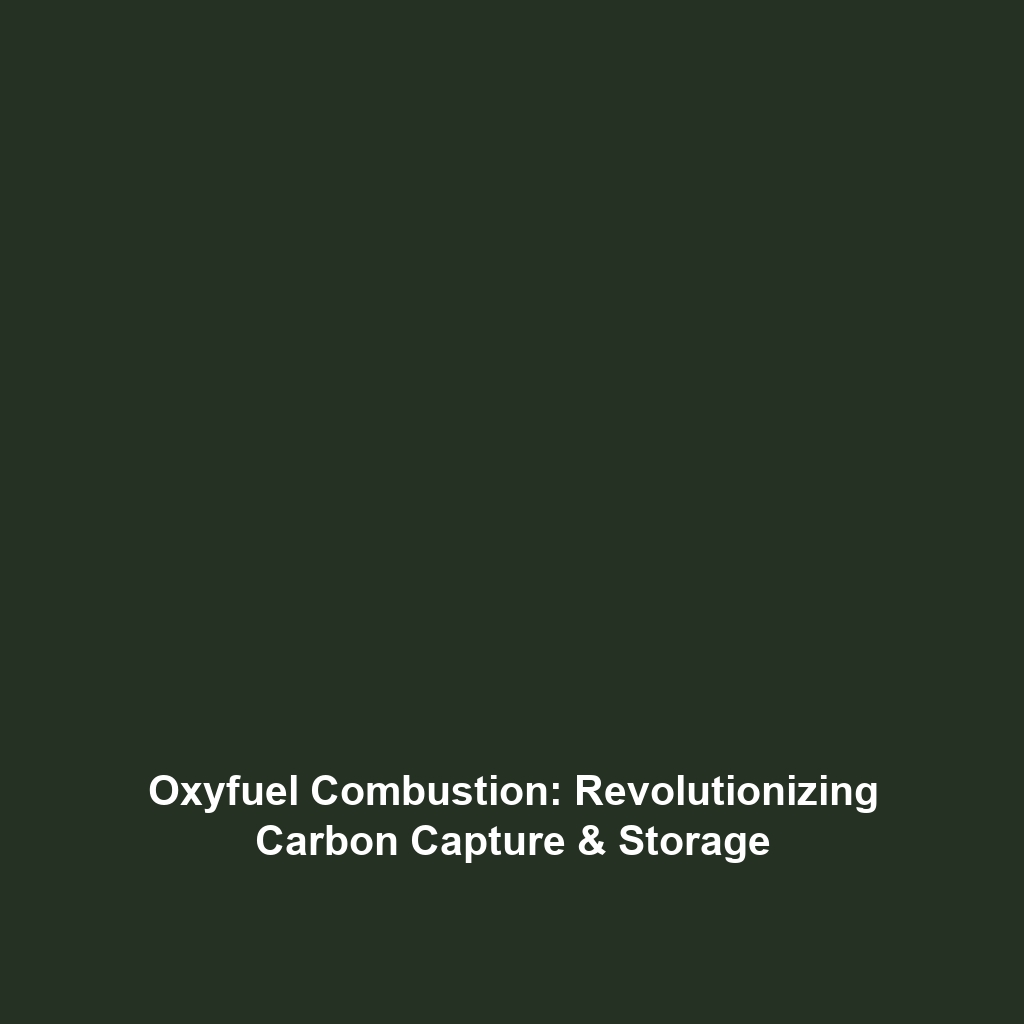Research is Ongoing to Make Carbon Capture & Storage (CCS) More Economically Viable for Large-Scale Applications
Introduction
As the world grapples with the challenges of climate change and carbon emissions, Carbon Capture & Storage (CCS) has emerged as a pivotal solution. Ongoing research is focused on enhancing the economic viability of CCS technologies for large-scale applications. This endeavor is crucial for substantially reducing greenhouse gas emissions from industrial processes and power generation. By finding more cost-effective methods to capture and store carbon, CCS can play a vital role in combating climate change and fostering a sustainable future.
Key Concepts
Understanding the economic viability of CCS involves several key concepts:
- Capture Technologies: Various methods, including pre-combustion, post-combustion, and oxy-fuel combustion, are being explored to enhance efficiency.
- Storage Mechanisms: Safe and long-term storage of captured CO2 is vital, with options including geological formations and ocean storage.
- Policy Frameworks: Government incentives and regulations play a crucial role in promoting CCS investments.
These concepts illustrate how research is ongoing to develop technologies that can make CCS economically feasible on a large scale, ensuring it fits seamlessly into the broader efforts to mitigate climate change.
Applications and Real-World Uses
The significant applications of CCS focus on both capturing carbon emissions and utilizing the stored carbon effectively:
- Power Generation: CCS technologies are being implemented in coal and natural gas power plants to minimize emissions.
- Cement and Steel Manufacturing: These industries are piloting CCS methods to reduce their carbon footprint substantially.
- Enhanced Oil Recovery (EOR): Captured CO2 is used in oil extraction processes, demonstrating a dual benefit of carbon utilization.
As research continues, innovative applications of CCS are expected to evolve, showcasing how advancements in CCS can contribute to various sectors.
Current Challenges
Despite the promising potential of CCS, several challenges remain:
- High Initial Costs: The upfront investment for CCS technologies can be prohibitive.
- Public Perception: There is often skepticism about the safety and feasibility of CO2 storage.
- Infrastructure Needs: Extensive infrastructure is required for transport and storage, which is currently limited.
Addressing the challenges of making CCS economically viable is vital to advancing its widespread adoption.
Future Research and Innovations
Looking ahead, several exciting research initiatives aim to overcome existing barriers:
- Next-Gen Capture Technologies: Innovations such as direct air capture and bioenergy with CCS (BECCS) are emerging.
- Cost Reduction Methods: Research is focused on reducing operational costs through improved materials and processes.
- Integration with Renewable Energy: Efforts are underway to integrate CCS with renewable energy sources for a sustainable solution.
These innovations highlight a concerted effort to advance CCS as a viable option in the global strategy to combat carbon emissions.
Conclusion
In summary, ongoing research to enhance the economic viability of Carbon Capture & Storage (CCS) is crucial for large-scale applications. By tackling the challenges and embracing future innovations, CCS can become a cornerstone technology in our fight against climate change. To learn more about CCS technologies and their impacts, follow our in-depth articles on CCS research.









